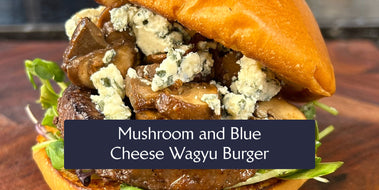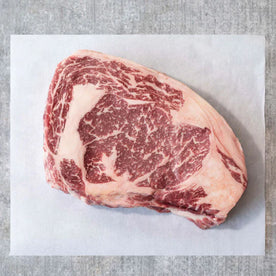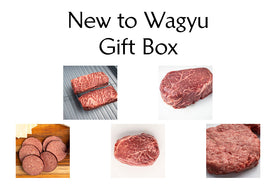The History of Wagyu
Wagyu has been prized for centuries for its taste and texture—as tender as tuna and as rich as foie gras. It’s all thanks to genetics, and the insular island of Japan that kept them pure.
Scientists believe cattle were brought to Japan from the Korean Peninsula or China and, although they disagree exactly when, it could have been anywhere from around A.D. to the 5th century. For the next 1,500 years or so—with the exception of the Mongolian Invasion in 1274, when most cattle were killed for meat—cattle were mostly used in Japan as draught animals and as a source of fertilizer. At the time, Japanese cultural and religious beliefs prohibited the consumption of meat.
Japan was isolated physically and politically from the rest of the world until 1854, when Japan signed the first treat with the U.S. to open up trade with other nations. Prior to that, there was zero cross-breeding of different cattle strains, and aggressive inbreeding led to superior bloodlines. These superior cattle were traded at high prices and were a status symbol for the wealthy.
Then, in 1939, a bull by the name of Tajiri-go was born, and because he was so genetically strong, he was used to breed many, many offspring, landing him the moniker “the great father of Wagyu.” It’s estimated that 99.9% of purebred Wagyu are his descendants. (There are four distinct breeds that are considered to be Wagyu, but only two that have been exported to the U.S., which are the Japanese Black, and the less common Japanese Brown, aka Red Wagyu or Akaushi.)
While Japan opened the port of Yokohama in 1859 in accordance with the 1854 treaty, it still refused to provide foreigners cattle for meat. But in 1865, nine warships from Britain, France, the Netherlands, and the U.S. invaded the port of Hyogo, just west of Kobe, and eventually negotiated with local cattle merchants. The ships brought the beef to Yokohama, where “Kobe beef,” a specific type of Wagyu, became prized for its deliciousness. In 1868, a new port of Kobe opened to foreign trading, and a foreign settlement—along with the country’s first slaughterhouse—was established. The reputation of the beef spread to the native Japanese, and by 1875, eating meat became popular elsewhere in the country.
But it wasn’t until 1976 that Wagyu cattle stepped foot on American soil, when four bulls were shipped to a Colorado State University researcher and had their semen extracted for breeding. Then, in 1992, a Wagyu crossbred steer won the National Western Stockshow beef carcass contest in Denver, which spawned more widespread public awareness and interest in Wagyu.
In 1993, a second shipment of Wagyu was imported from Japan, which included females, which made reproducing purebreds possible. A few years later, Japan declared Wagyu a living national treasure and stopped exports altogether in 1997, and it continues to be illegal to export. But there were enough purebred cows brought in previously that over time, however, the Wagyu population and the reputation of its beef, with much of it branded erroneously as Kobe (Kobe beef must be born and raised in Kobe), grew.
Today, there’s an estimated 40,000 cattle that are half- to full-blood Wagyu. We are proud to be a part of this history—and proud to be able to bring it to you.
More blog posts

Mushroom and Blue Cheese Wagyu Burger
Combine sautéed mushrooms and tangy blue cheese with Wagyu Steakburgers for a sophisticated take on burger night.

Welcome to the Miraflora Farm!
In addition to raising the finest Wagyu on the planet, we also raise alpaca, goats, chickens, bees, hay, and wildflowers.





